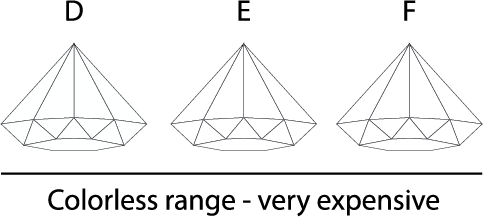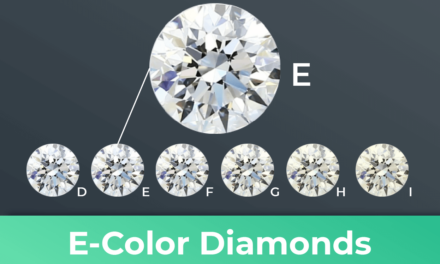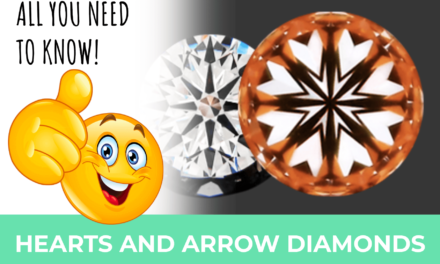My website is reader-supported. Buying through links on my site may result in me earning a CUSTOMER REFERRAL FEE at no extra cost to you.
Check out the latest deals at our top diamond vendor choice: James Allen
Diamond Color Guide – Which Color You Should Choose

Diamond color, on the left color M, in the middle color I, on the right color D
If you’re in the market for an engagement ring, you’ve probably heard that there are different “grades” of diamonds. But what does that mean?
And how do you know which grade is right for you? In this post, we’ll break down all you need to know about diamond color grades, so you can make an informed decision when buying your ring. Stay tuned!
Content overview
- What is diamond color?
- Why diamond color is important
- The official diamond color chart
- Colorless diamonds
- Near colorless diamonds
- Faint color diamonds
- Fancy color diamonds
- How the diamond’s color affects the diamond’s price
- How the ring setting color affects the optimal diamond color grade
- Why and how fluorescence affects diamond color
- Conclusion
Diamond Color Summary
- Diamond color refers to the presence and absence of color
- In most cases, you don’t need to buy a very highly graded diamond
- Only certain diamond sizes and cuts require high grades, such as diamonds above 2 carats or Emerald cut diamonds
- If you intend to set your diamond in a yellow gold setting, you can choose lower grades
- The best places to shop for diamonds are James Allen and Blue Nile
What is diamond color?
A diamond’s color refers to the absence or presence of color in the diamond’s body and is ranked from D to Z, where D is perfectly colorless and Z is yellow or brown.
Color plays an important role when buying a diamond. It largely influences the perceived sparkle and fire of a diamond.
For example, a diamond that appears white and clear will sparkle more than one that seems clouded or dull:
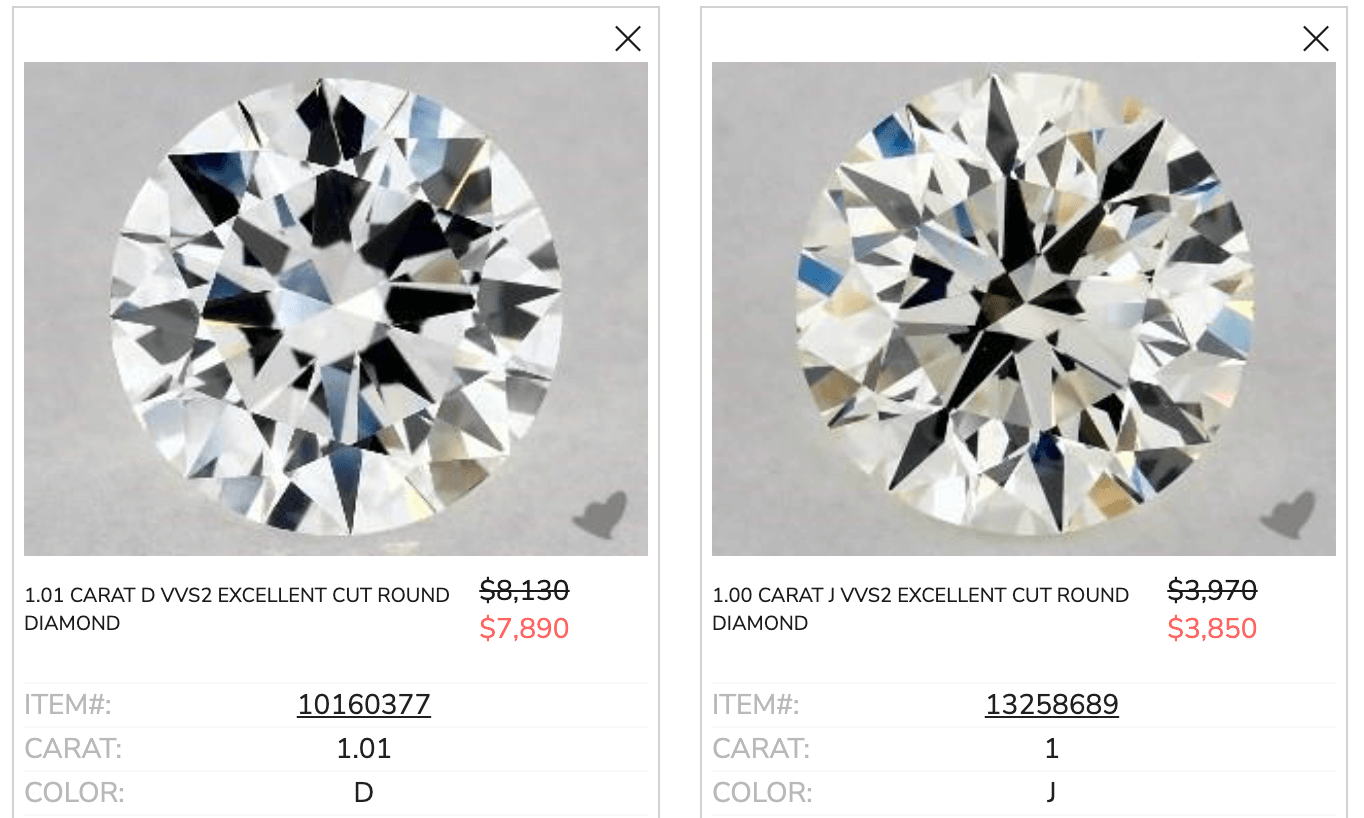
It’s a bit counterintuitive, but the best color is colorless. And perfectly colorless diamonds are extremely rare.
The natural color range of white diamonds ranges from barely visible to very intense shades or tints of yellow/brown.
To see what I mean, take a look at the two loose diamonds below. One is colorless, the other one has a noticeable yellow tint:

Unlike what most people think, you don’t need to purchase a completely white diamond. That’s because often, you can’t even see the difference between several color grades with the naked eye. And why pay for some feature you can’t even see? I’ll explain which grade you should choose to get the maximum value for your money in the following sections.
Why color is important
When light enters a diamond, there is a prismatic facet: The light bounces, which results in what gemologists call ‘fire.’ If you notice any color in the diamond, it’s its light reflection (much like that of clear water) and not so much that of the actual diamond color (which is colorless).
Eventually, reduced transparency and scintillation result from lower color grades as classified by the diamond color scale. In other words, the relationship between the color of diamonds and light absorption is inversely proportional.
Hence, you get better visible sparkles and light absorption from a more colorless diamond. However, that doesn’t mean you have to buy the highest-graded diamond color…keep reading.
The official GIA color grading scale
The GIA diamond color scale is used for GIA (Gemological Institute of America) certified diamonds to measure the absence of color in a diamond.
You can see the normal color range of white diamonds in the diamond color scale below:
As you can see above in the diamond color grading scale, there are three main color categories:
- D-F color diamond: Colorless diamond range, very expensive and usually “not worth” it
- G-I color diamond: Near-colorless range; optimal for saving money
- J-Z color diamond: Noticeable light yellow color, only recommended for a gold ring settings
TIP: See a color simulator here.
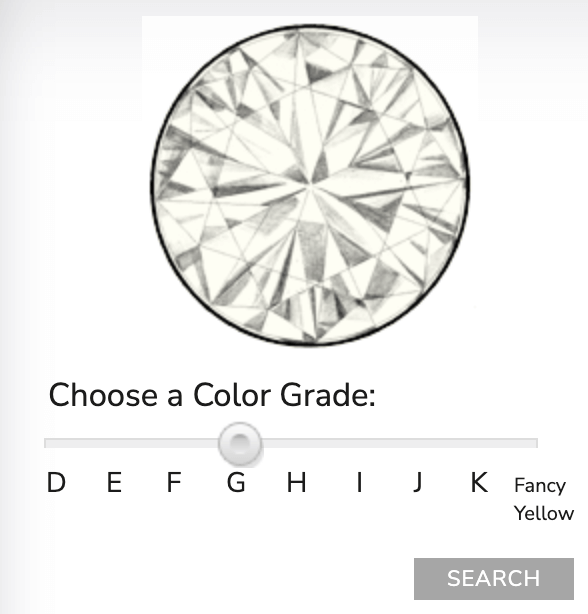
Colorless Diamonds (D, E, and F)
D and E colored diamonds have no yellow hue. Therefore, they get called icy-white.
These types of diamonds are best placed in white gold or platinum. For instance, yellow gold and other colored ambiance would take away the high luminosity of the color grades.
Almost Colorless Diamonds (G, H, I and J)
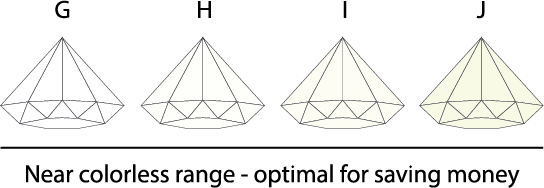
While facing up, the diamonds within the almost-colorless range look colorless. But if you place them face-up, they exhibit a very minute amount of body color. Therefore, you have to view them against a perfectly white background to see it.
However, you may not detect the color as a layman when the diamond gets mounted in a ring setting. That’s why you might want to go for the near-colorless diamonds on the diamond color scale. It will save you money.
Faint Yellow Color Diamonds (K, L, and M)
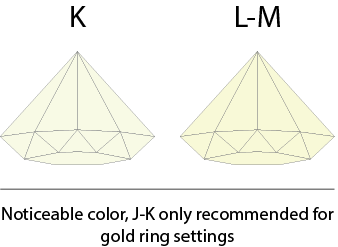
These diamonds exhibit a light yellow hue that the untrained eye can see. People who wish to set their diamond in a yellow gold ring see this as their best option because the diamond picks up quite a lot of color from the yellow gold ring setting.
Note: Some people are specifically looking for intensively yellow diamonds. Those diamonds are referred to as fancy colored diamonds, and they come in various colors, not just yellow.
Fancy colored diamonds
Colored diamonds are created when certain impurities are introduced to the diamond during its formation, causing color.
The fancy colors include red, pink, purple, orange, yellow, green, gray, black, blue, and brown diamonds.

Fancy-colored diamonds exist in nature but are very rare since they represent only about 2 percent of all mined diamonds.
The GIA diamond color scale doesn’t apply here. Instead, fancy colored diamonds are described via a color scale ranging from fancy light to dark.
Moreover, on the Mohs scale, fancy-colored diamonds rate a 9 or 10, while colorless diamonds rate a 10. In other words, fancy colored diamonds are less durable than white diamonds.
If you are interested in fancy colored diamonds, check out James Allen. They have a wide selection of natural diamonds and lab-created diamonds in various diamond shapes.
How the diamond’s color affects the price of a diamond
The color of a diamond largely impacts the diamond’s price. For example, diamonds with color grades from D-F are considered more valuable than those with G-J color grades.
Below I put together a brief chart that outlines the diamond price in relation to the diamond’s color. As you can see, the lower you go, the more money you can save:
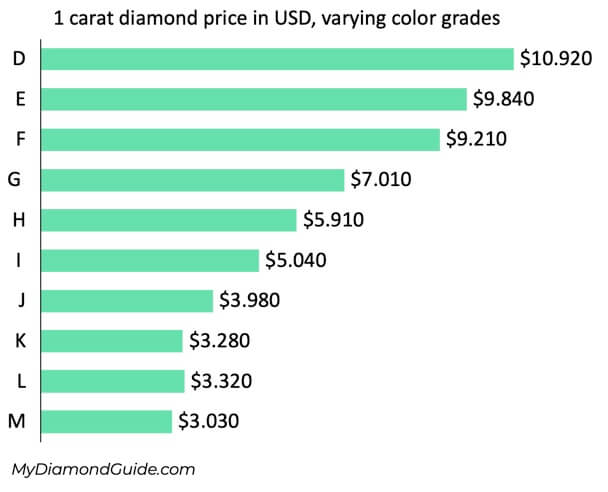
How the ring setting color affects the diamond’s color
Diamonds usually end up in a ring setting. And the color of the ring setting can have quite an effect on the diamond regarding its color, which you can use to your advantage in some cases.
Diamonds in white gold settings do not adapt as much color from the metal as those in a yellow gold setting. For this reason, you don’t have to go for the best color grades when you wish to mount them on yellow gold.
Even if you choose a diamond with a light light yellow color, the diamond will still appear white compared to the ring setting.
Have a look and compare these diamonds on yellow and white gold settings. Both diamonds look white, yet the one on the left has a grade of G, and the one on the right has a much lower color grade of I.
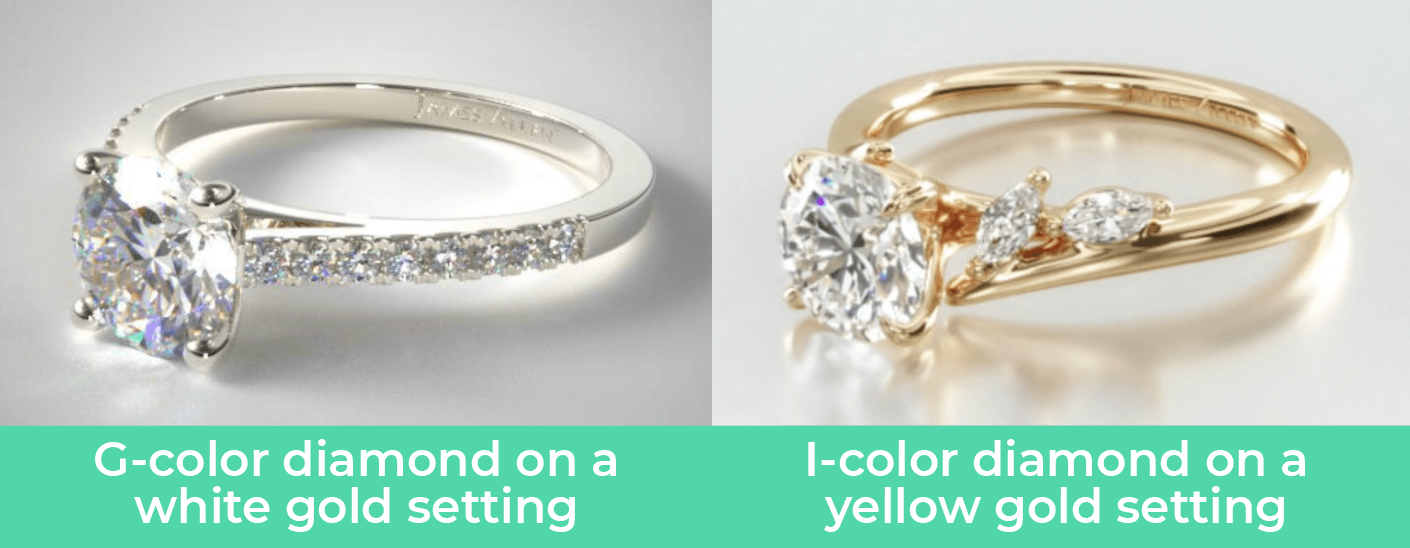
That being said, as a rule of thumb you can choose a lower color grade for a yellow gold setting than for a white ring setting.
My color recommendations for the various diamond shapes and ring settings are as follows:
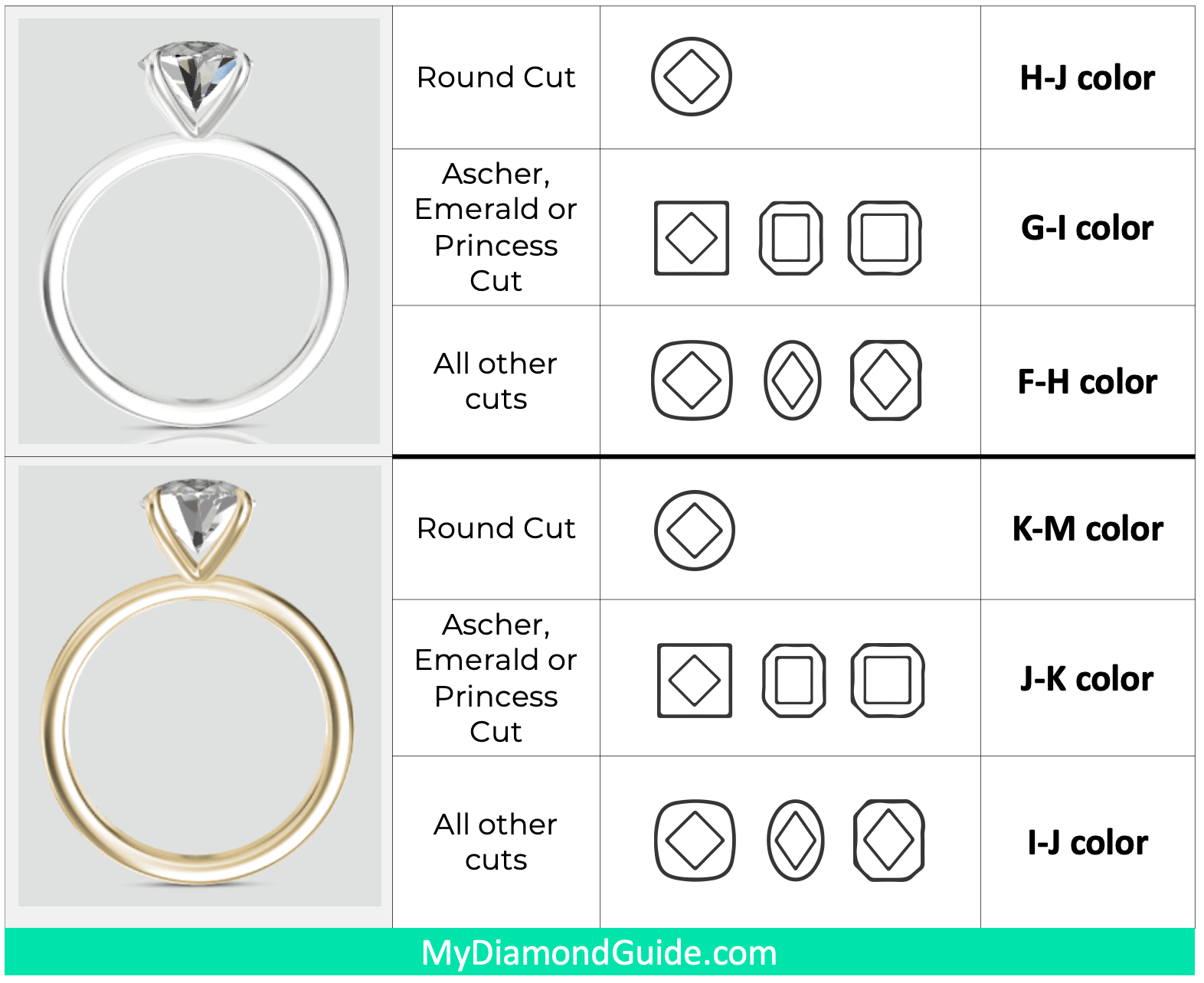
How blue fluorescence affects the optimal color for a diamond
Some diamonds exhibit fluorescence. This is always mentioned in the grading report, irrespective of the degree.
If you wish to go for a diamond in the I-K color range to save money, you should consider the diamonds with medium or strong blue fluorescence, especially because you can get a discount on those ones.
Remember that I am not recommending that you buy a diamond with fluorescence, except if you are going for this particular color range.
The blue fluorescence will help offset some of the color in the diamond.
Conclusion
In summary, you don’t need the highest quality color grade to find the perfect diamond. That’s why G and H color diamonds remain the most popular color grade choices for engagement rings. As long as you choose a color grade below G, you are fine.
For instance, chances are you won’t differentiate between G and D if they were held next to each other. The only place you will see a difference is in your pocket! Therefore, only with a larger diamond above 2ct, you might want to consider buying a higher color grade because the larger the diamond, the more color they trap and exhibit.
The only other exception where you might want to choose diamond colors above G or H are when it comes to certain diamond shapes, such as an Emerald or Asscher cut diamond.


